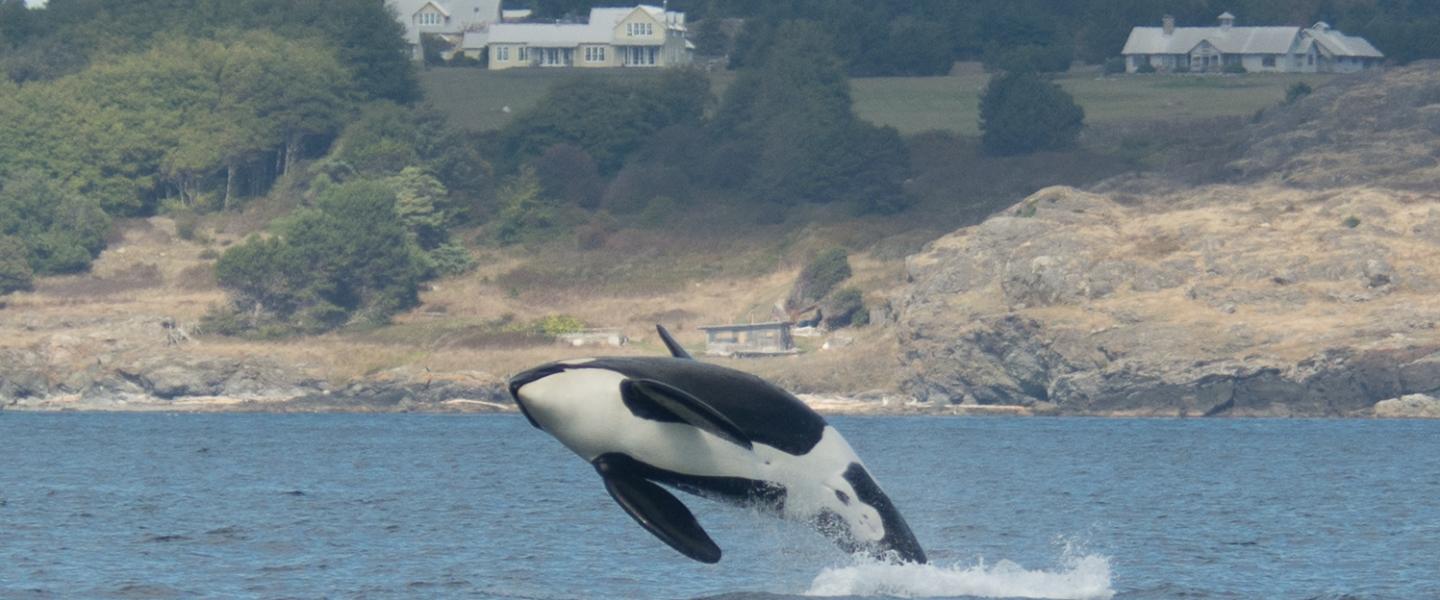
Captain Mike, Sarah, and myself took out a wonderful group aboard M/V Sea Lion to look for the wide array of wildlife that we have the opportunity to watch in the Salish Sea in September. We took our group south through San Juan Channel towards Cattle Pass. We made our first stop mid channel in between San Juan and Lopez Islands to look at a Steller Sea Lion that had just surfaced! It was our first marine mammal of the day! This adult male had just returned to the surface after catching something to eat. I am not sure what it was since it had already been gnawed on a lot, but he and the gulls pestering him seemed to enjoy it. These large pinnipeds have a widely varied diet ranging from small, oily fish, to large, fatty salmon, and sometimes even cephalopods like octopus and squid. I have even seen them dive very deep to catch skates that dwell at the bottom here. We soon left the sea lion and continued south as he dove to try and avoid the gulls from getting all of his hard-earned meal. Our next stop was at Whale Rocks just off the southwestern end of Lopez Island located within the dynamic Cattle Pass. Here these rocks are covered with various seabirds, Harbor Seals, and as we dive into fall more and more of the rocky real estate here is taken up by Steller Sea Lions. There were at least 50 sunning themselves on the rocks and a few dozen more floating and playing in the surrounding Bull Kelp forest. This is one of my favorite parts of the tours. These giants (the biggest members of the ‘eared-seal’ family) often just waddle around growl for seemingly no reason other than to claim a better spot on the rocks or to prevent another sea lion from using, usually unoccupied, prime resting spots. So silly.
Next we headed west out of Cattle Pass, over Salmon Bank and along San Juan Island’s southern shoreline. As we motored along we saw many Harbor Porpoises which are the smallest and most numerous cetaceans here. We also saw some loons, grebes, and a whole bunch of Surf Scoters! After a short time though we started to see many blows in the distance! As we slowly approached we could see that they were Orcas (Killer Whales)! These were members of J pod. J pod is one of the three pods that make up the Southern Resident Killer Whale community. This population only number 74 individuals currently and are listed as critically endangered so it is always special when we see them. Today, they were mainly fishing along this southern shoreline in between Salmon Bank and False Bay. The Southern Resident Community’s main prey is Chinook Salmon and the low abundance of this prey for the past few decades is the main reason their population is struggling.
Since they were fishing in one main spot we turned our motor off and watched them there. We saw the J17’s (one of the matrilines or ‘familie’ within J pod) first. They were foraging off Eagle Point. Next we saw the J16’s traveling by to join up with another part of J pod about half a mile west of where we were watching. After watching these families feed on salmon, tail slap, and travel we moved a bit farther off and watch J27, Blackberry swim by us and then also watched L87, Onyx, travel by as well. Onyx is technically a member of L pod but was adopted by J pod after his mother died. Now he is a full grown male with that distinctive 6-foot tall dorsal fin. As I was explaining his unique history he decided to fully breach 3 times before swimming on. So cool! We left after that amazing experience and after slowly departing the seen made our last stop at Deadman Island where we got to see a whole bunch more Harbor Seals and one Turkey Vulture! What an amazing fall day out here in the San Juans. As we get more and more into fall we will see the seasonal changes in birds and marine mammals so come check us out!
Naturalist Erick
See all 7 photos